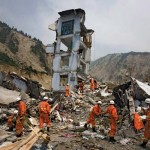 After the terrible terrorist attacks in France recently there were again suggestions about the use of social media by nefarious types, and the need to be able to lock it down or break encrypted data streams.
After the terrible terrorist attacks in France recently there were again suggestions about the use of social media by nefarious types, and the need to be able to lock it down or break encrypted data streams.
As a narrative it was reminiscent of similar murmurings after the riots in London a few years ago that were partly co-ordinated via Blackberry Messenger.
It all reflects the general unease with which many officials still seem to regard social media. It’s an unruly domain that they cannot exert any control over, which no doubt makes them rather nervous.
A recent study highlights how useful it can be however, especially in times of trouble and strife. The research, authored by academics from the University of British Columbia, looked at the response to the 2008 earthquake in China, and how officials responded to the disaster as it unfolded.
The paper reveals how young people in Chengdu didn’t wait for officials to tell them what to do, but rather took to social media to organize themselves.
This wasn’t anything whizzy either, but rather a good, old fashioned discussion forum, whereby students rallied together to offer support, advice and calls to action.
“When I first looked at the data, I looked for the leaders in the group – but I was surprised to find there weren’t any, not even unofficially,” the authors says. “When we see intelligent behaviour of an organization, our intuition is always to look for the leader giving out instructions.”
“No one stepped up to take charge, but as they all pitched in, a collective order took shape. Basically, the whole was more than the sum of its parts,”
The analysis revealed that the online community members were often unintentionally mimicking the best practice in crisis management protocol, albeit without any such knowledge.
They would go through the four phases of crisis management as laid down by the literature: sensing; understanding; deciding; and evaluating, despite having nobody leading their efforts.
The first stage would tend to be quite visceral and emotional as people respond to what has happened. Members would then seek to understand the events and share useful information, bust rumors and reflect on their role, both as helpers as well as victims.
They would then move onto the third stage and start to figure out just how they could begin helping the relief effort. The platform was used to throw around some ideas, with the best ones gaining democratic approval.
Lastly, these responses would be evaluated and the group would begin to seek a degree of closure from the disaster.
“Organizational theorists tend to focus on fostering leadership in a few elite members,” the author says. “So this shifts the focus to the ordinary members, showing that if you mobilize them and allow them to organize themselves, that can be just as good, if not better than a top-down approach.”
It is only through social media that such bottom up responses are possible because they enable the wisdom of crowds to be tapped. The paper is firm in its support of the technology and underlines that it should not be taken for granted.
“Social media isn’t just some utility. It can fundamentally change how we live and how we work,” it concludes.
Of course, there are risks involved too, and there have been several studies looking at the way misinformation spreads through social networks. Of course, a good place to start might be with the misinformation that seems to regularly flow from the mouths of politicians.
Very clever. Shows how ingenious people are when given the chance.
Usually when they have no choice though, right?